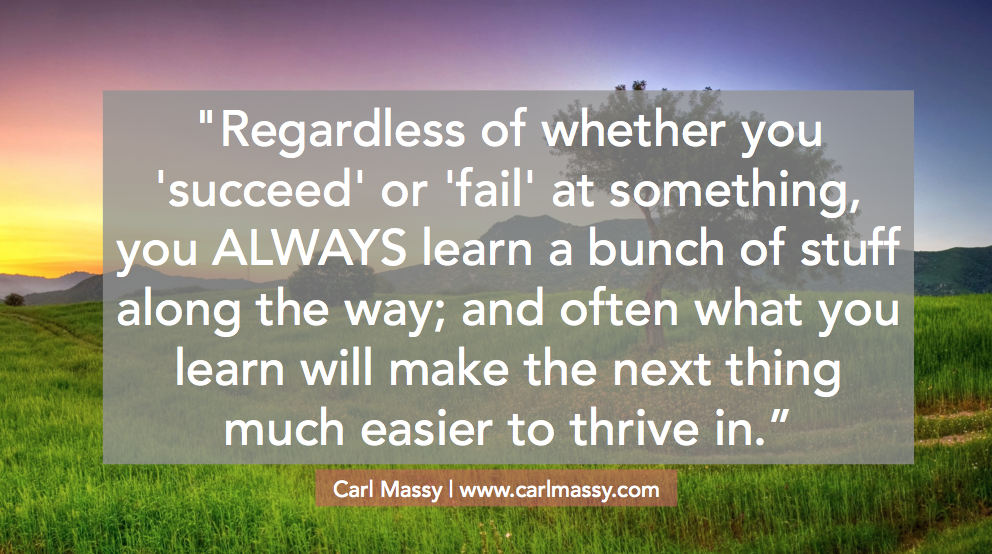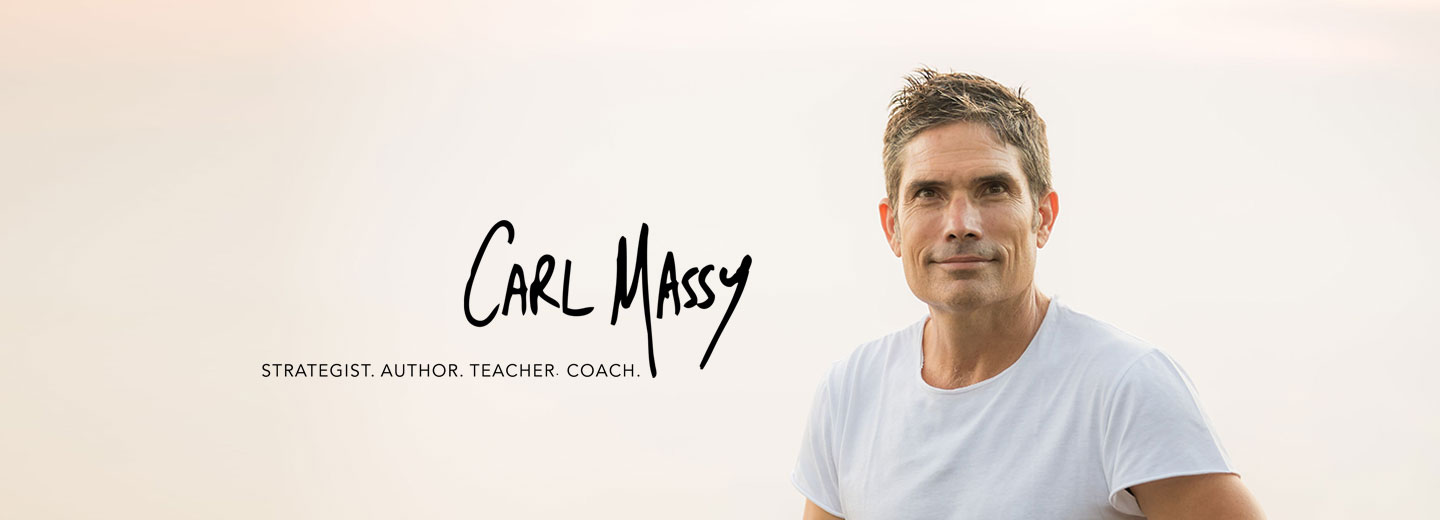
Goal Setting practices and principles can be pretty awesome.
Following intentional (and time tested) steps can lead to us achieving things we hardly thought possible.
And in the vast majority of cases – by following a tried and tested process – you can achieve a lot more of what you want, than if you just try and ‘wing it‘ through life.
For instance, most businesses, which want to succeed (and do succeed), are not winging it.
They follow a process.
The ‘Goal Setting Process’ I teach is 6-steps and looks like this:
1. Get crystal clear of your VISION.
2. Get clear and attuned to your WHY.
3. Figure out who you need to BECOME in order to achieve your goal.
4. Come up with a solid PLAN focused on ESSENTIAL tasks.
5. Take bold and intentional ACTION.
6. Review and REVISE based on real-world FEEDBACK.
I think that is a pretty solid process, and it has worked very well for me over the years.
But today I want to talk about a potential blind-spot for many people who are great at achieving big goals, and who are generally considered A-Types, or ‘high achievers’.
This blind-spot causes WAY more pain and discomfort than is necessary.
Background
Have you ever heard the saying when it comes to achieving big goals that you need to ‘burn the bridges behind you‘ or ‘burn your boats once you land‘ in order to ensure that you can only move forward?
Sort of like ‘succeeding or perishing’.
A bit melodramatic for me, and not in alignment with having a fun life along the way to achieving your big goals.
An interesting path, but not necessarily what I am likely to teach.
I am okay with a bit of good old-fashioned discomfort, but too much pain is not the box we want to tick.
Which brings us to the blind-spot of many high achievers.
It is this.
Knowing when to stop.
When to toss the towel in?
When to walk away?
There is a healthy time, and a healthy outcome to knowing when the right time is to call it quits.
This is the area that many high achievers (in my experience) don’t have perspective of, or an appreciation for.
Obviously this is not about quitting when things get hard, but it IS about when to walk away if discomfort leads to pain, and then turns into chronic pain, and eventually burn-out or a break-down.
Knowing when to quit, is just as important as any other step in the Goal Setting process.
An example
A few years ago I invested in a business, as I know the Founder is a ‘go-get-em’ kinda guy.
He has grit, resilience, real-world experience, integrity and had a good business plan and strategy.
So it was a pretty good investment as the product he was offering, was definitely in demand and on the rise.
Now things got a bit challenging around 2020-2022 (obviously), but not overly so, based on the business we were in.
However, there was one part of the business (which was not the core business) which was a major pain in the butt.
One of those things that took 80% of the energy, but only delivered about 20% of the revenue (if that).
Rather than realising at some stage that this part of the business needed to be cut away or out-sourced or down-sized, our go-get-em kinda guy kept trying, and trying, and trying to make it work.
Kudos to him for his grit and tenacity, but a classic example of not knowing when is the right time to chuck the towel in and rewrite the plan.
Why people keep going when it is time to pack it in
Again, I am not about packing it in before you have tried ALL options.
I am about being smarter as to when enough is enough.
And just like in business, or big goals, this also relates to stuff like “relationships” which we are all familiar with.
Here are reasons why people might not throw the towel in (when that would be the best idea):
1. They feel they have invested too much time, energy, and money to walk away.
2. They are embarrassed to be seen as a ‘quitter’.
3. They are unrealistically optimistic (they have the wrong plan, product, partner, etc. but won’t accept it).
4. Their identity is attached to their business, relationship or goal.
5. Their think if they just add more force (or resources or money) it will ‘come good’.
6. They have a fixed limiting belief, which says, “You can never quit” (which is exempt from rational ‘exemptions to the rule‘).
7. They have no idea what life would look like without X in their life.
None of the 7 reasons I have listed above are good enough reasons to take you to an early grave – figuratively or literally.
How to win even as you walk away
Here is my teaching on how to walk away from something and still be able to win with your head held high.
Regardless of the final outcome of your achievements, you ALWAYS learn a bunch of stuff along the way; and often what you learn will make the next venture (or relationship) much easier to succeed in.
The end of something is not the end of everything.
The space created, from ‘throwing the towel in‘, allows the space and energy for the start of something new and fresh.
A note I want to reiterate on the ‘always learning’ element, is that it is though a deep analysis of the thing you are walking away from, that you learn most.
If you run away too quickly, or refuse to look back on the experience, the learning potential is reduced.
So the caveat is: you have the POTENTIAL to learn a lot, IF you decide to analyze deeply, and without judgement of what you did right, wrong or otherwise.
For me LEARNING = the potential for future WINNING.
Which means you can’t loose, if you consciously and mindfully call it quits.
In Summary
Want to know the truth?
This article went a slightly different direction than what I first imagined.
I started thinking it was about A-Type people not knowing when it is smart and healthy to toss the towel in; when it ended up being for us all (regardless of if we perceive ourselves as ‘high achievers’) and knowing when it is smart and healthy to call it quits.
There is a smart and healthy time to end something.
It is not when things are uncomfortable, but when things become consistently painful (i.e. chronic pain) and are likely to lead to physical or mental health issues.
And know that even if you ‘quit’ something, there is still a bucket-load of learning potential wrapped up in the experience, which will serve you well in your future endeavours.
My Parting Words
Sometimes when I write I know exactly where things are going.
Other times, I shine the light on something periphery to my main point at the start.
So the main takeaway from this is about knowing when it is time to ‘walk away’.
And that sticking with something, until the complete life is sucked out of you, is not the smart or noble or virtuous way to do life.
It is all about knowing the difference between discomfort and pain.
Listening to the body’s feedback and then acting on it.
I won’t say too much more, as this has been a longer article and I know you have got the main point now.
However I do have this question.
Is there something (big or small) in your life where you might benefit from ‘tossing the towel in’?
I will leave that with you.
Have a fabulous day, and a get-rid-of-what-is-not-working for you kinda week.
Take care
Carl
Quotable QUOTE:
“Regardless of whether you ‘succeed’ or ‘fail’ at something, you ALWAYS learn a bunch of stuff along the way; and often what you learn will make the next thing much easier to thrive in.” Carl Massy
(Author of 18 Ways We Make Life WAY Harder Than It Needs to Be)
PS: Have you read or listened to this book yet? 18 Ways We Make Life WAY Harder Than It Needs To Be

